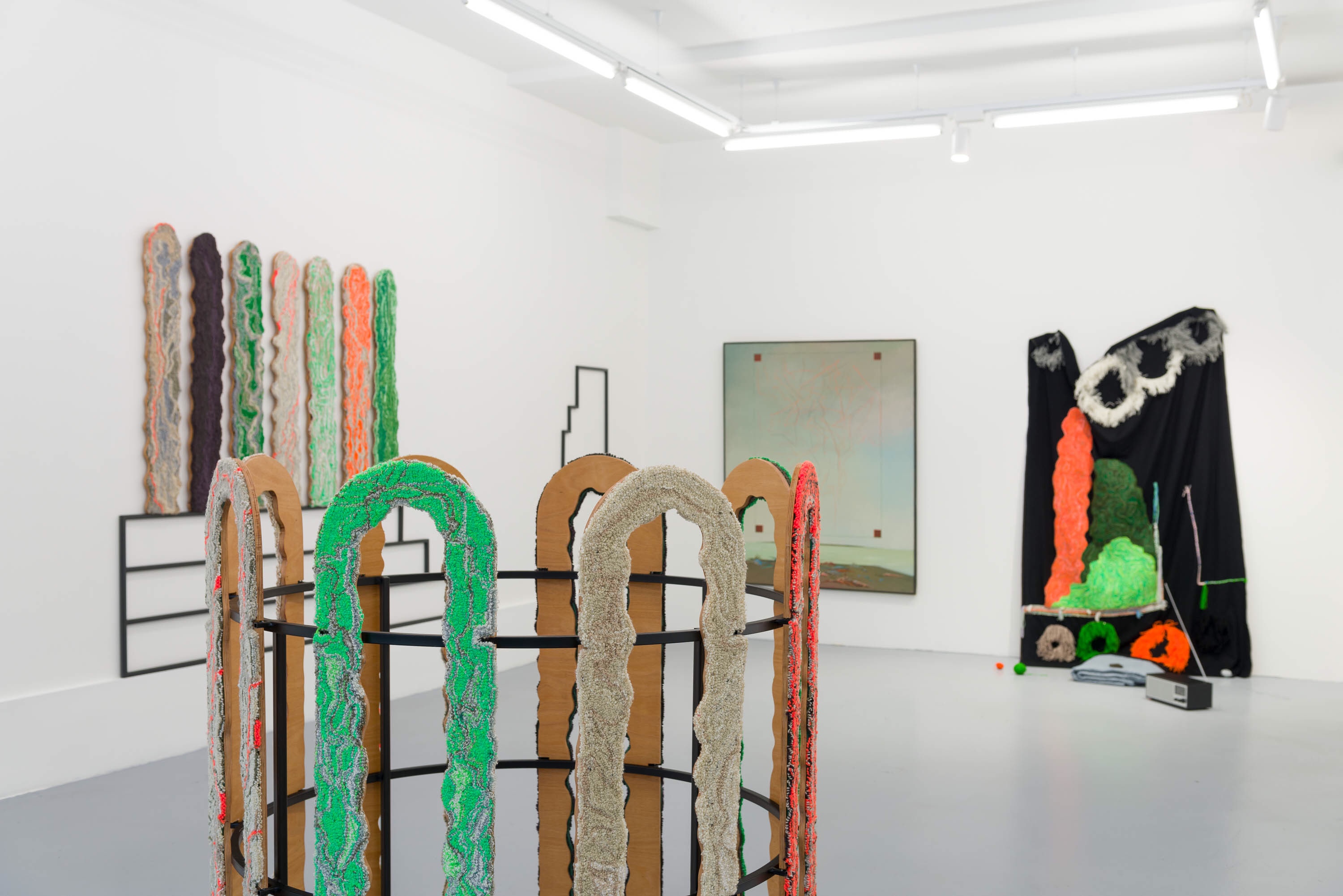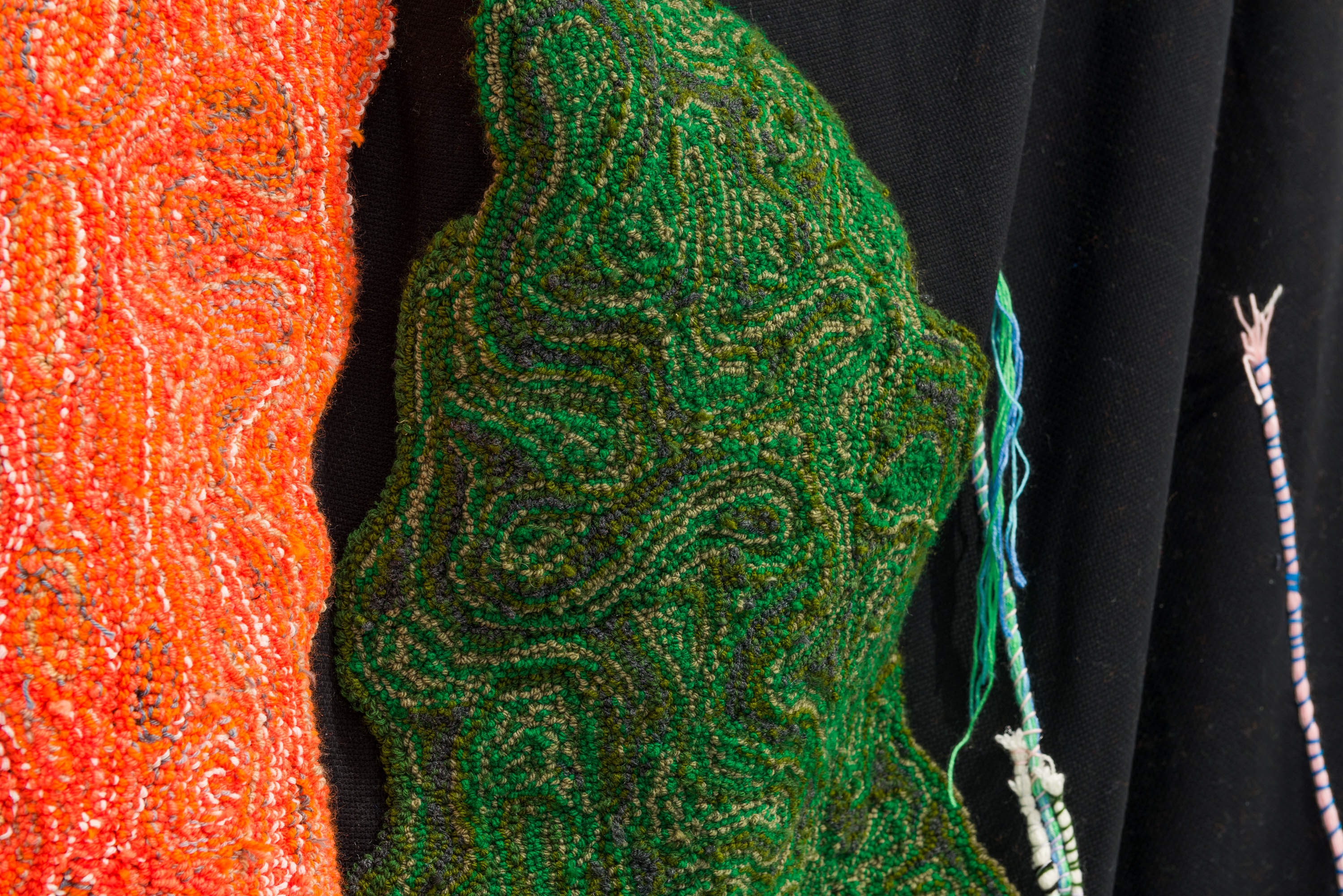Artists: Laura Põld, Andres Tolts
Curator: Šelda Puķīte
Title: Common Threads, Polar Bear and Elephant
Venue: Kogo Gallery, Tartu
Photos: Marje Eelma
This year’s final exhibition at Kogo Gallery is by Laura Põld and the late Estonian art classic Andres Tolts (1949–2014). Although they represent two different generations and the histories attached to them, both seem to share similar visual threads and interests. These links can be read through the way both artists have used forms, patterns, materials and space revealing similar thought processes. To put this observation to the test, exhibition curator Šelda Puķīte invited Laura Põld to make a series of new works that are exhibited alongside paintings by Andres Tolts from the Tartu Art Museum collection.

It is somewhat strange now to think that these threads, most probably never noticed by the artists themselves, were already present when Andres Tolts was still alive.In the 2010s, Laura Põld, still in the early stages of her career, was making projects with semi abstract paintings and recycled furniture assemblages that poetically mimicked the grand landscapes of nature. In the same period, Andres Tolts had reduced his collaged landscapes to a few fragmented patterns and signs carefully arranged using oil and brush on an otherwise sterile canvas surface.Now after Andres Tolts has passed away and his legacy is woven in Estonian art history, Laura Põld continues to expand her artistic patterns.

An intriguing common thread both artists share is the urge to juxtapose copies of the man-made landscape and elements from nature. Arranged together these make a single mystical puzzle for the rest to decipher. It can feel like an exercise using different types of landscapes but what it really seems to resemble, paraphrasing Laura Põld from a conversation with her, is a man stuck in a cube dreaming about a masterfully designed park. There is something of the Belgian Surrealist René Magritte’s thought provoking and playful depictions of somebody’s perception of the world, or Italian metaphysical master painter Giorgio de Chirico’s philosophical arrangements of random domestic objects, cultural artefacts and his own art copies in a cluttered space. Andres Tolts seems to have never been truly vocal about the messages behind his works beside the interest in aesthetics and image culture. Laura also likes to describe her work in a poetic way although sometimes pointing to social and environmental issues that trouble the world. The juxtaposed landscapes by both artists seem to tell of human experiences and habitats that in the artist’s thought process are recreated into a multiverse, places where different times and spaces can naturally coexist.


Taking Kogo Gallery’s space and Andres Tolts’ creative heritage as the main inspiration, in the exhibition Common Threads, Polar Bear and Elephant, Laura Põld continues to explore the possibilities of a constructed multiverse. Thinking about the apartment that the late artist lived in with his wife Mare Vint, which was decorated with both artists’ work, Laura Põld imagines this interior as a collage. She constructs the new series of works as if they could be a natural extension of Andres Tolts’ paintings inhabiting the room. Metal constructions, threads and colourful tufted carpets shapeshift into certain objects found in the cityscape yet never truly becoming something concrete. In a way it can be viewed as a reference to Andres Tolts’ interest in anti-design and architecture concepts coming from the 20th century, creating an illusion of space yet keeping ideas and forms in a fluid stage.



The exhibition is part of this year’s Kogo programme, which is introduced under the title Past is the Present, as a kind of ‘vibe’ using this poetic and semantically playful phrase to describe how time as a vehicle transports certain events and experiences from past to present. The exhibition by Laura Põld and Andres Tolts can be viewed as a celebration of Estonian art heritage that together with global influences continues to propel new generation artists forward. It also shows how art and art history coexist in a nonlinear time frame, constantly overlapping and communicating with each other in different exciting forms.
